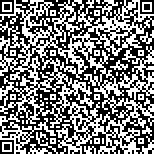| 引用本文: | 于谨磊,何虎,李宽意,陈非洲,刘正文.太湖贡湖湾鲚(Coilia ectenes taihuensis Yen et Lin)食物组成的季节变化.湖泊科学,2012,24(5):765-770. DOI:10.18307/2012.0518 |
| YU Jinlei,HE Hu,LI Kuanyi,CHEN Feizhou,LIU Zhengwen.Seasonal variations in the diets of Coilia ectenes taihuensis Yen et Lin in Gonghu Bay of Lake Taihu. J. Lake Sci.2012,24(5):765-770. DOI:10.18307/2012.0518 |
|
| |
|
|
| 本文已被:浏览 8691次 下载 3211次 |

码上扫一扫! |
|
|
| 太湖贡湖湾鲚(Coilia ectenes taihuensis Yen et Lin)食物组成的季节变化 |
|
于谨磊1, 何虎2, 李宽意2, 陈非洲2, 刘正文1,2
|
|
1.暨南大学水生生物研究所, 广州 510632;2.中国科学院南京地理与湖泊研究所, 南京 210008
|
|
| 摘要: |
| 鲚(Coilia ectenes taihuensis Yen et Lin)是太湖主要的鱼类之一,其产量随水体富营养化程度的加重呈上升趋势.本研究于2009年4-12月用刺网(a=10 mm)在太湖贡湖湾采集了鲚,分析了其胃含物中食物组成的季节变化以及鲚对食物种类的选择性.结果表明,鲚在各月中主要以浮游动物为食,同时也摄食幼鱼、幼虾和水生昆虫等.鲚的食物组成具有明显季节变化,4月份以桡足类为食,其中桡足幼体、汤匙华哲水蚤(Sinocalanus dorrii Brehm)和剑水蚤(Cyclops spp.)所占的平均个数百分比相当;6、8和10月份主要以枝角类为食,其中6月以裸腹溞(Moina spp.)为主,而8和10月以象鼻溞(Bosmina spp.)为主.食物选择性方面,鲚对大型浮游动物表现出主动选择;当环境中出现溞(Daphnia spp.)和透明薄皮溞(Leptodora kindti Focke)时,鲚对它们表现出很强的选择性摄食,但透明薄皮溞只出现在6月鱼类食物中;个体较小的裸腹溞也是鲚主动选择的重要食物,在整个调查期间鲚对裸腹溞都表现出较高的主动选择性;象鼻溞虽然在各月份食物中的出现率最高,但除10月份鲚对其表现出主动选择外,其它月份表现为主动回避或随机选择.本研究结果有助于我们了解鲚对浮游动物群落影响的季节变化,为制定合理的湖泊与渔业管理方案提供依据. |
| 关键词: 太湖 贡湖湾 鲚 食物组成 季节变化 |
| DOI:10.18307/2012.0518 |
| 分类号: |
| 基金项目:国家自然科学基金项目(31070419,31170441);国家重点基础研究发展计划"973"项目(2008CB418104)联合资 |
|
| Seasonal variations in the diets of Coilia ectenes taihuensis Yen et Lin in Gonghu Bay of Lake Taihu |
|
YU Jinlei1, HE Hu2, LI Kuanyi2, CHEN Feizhou2, LIU Zhengwen1,2
|
|
1.Institute of Hydrobiology, Jinan University, Guangzhou 510632, P. R. China;2.Nanjing Institute of Geography and Limnology, Chinese Academy of Sciences, Nanjing 210008, P. R. China
|
| Abstract: |
| Coilia ectenes taihuensis Yen et Lin(C. ectenes) is the dominant fish species in Lake Taihu, and the catch has been increasing with the eutrophication of Lake Taihu. In this study, in order to investigate the seasonal diets variations of C. ectenes in Gonghu Bay of Lake Taihu, we sampled the fish by gill net and analyzed bimonthly the gut contents of C. ectenes from April to December, 2009. Meanwhile, selectivity for different food items was also analyzed for the purpose to study the food preference of the fish. The results showed that the food composition of C. ectenes varied from month to month. Zooplankton, fish larvae, shrimp and insects were found in the stomach contents of the fish, but zooplankton was the dominant food. Among the zooplankton species, Copepod was the main food in April with close mean percentages diet composition of Copepodite, Sinocalanus dorrii Brehm and Cyclops spp. In June, August and October, C. ectenes fed mainly on cladoceran with Moina spp. as the dominated mean percentage diet composition in June and Bosmina spp. in August and October, respectively. Small zooplankton composed the main percentage diet composition, such as Bosmina spp. and Moina spp., in all sampling months. However, C. ectenes negatively selected Bosmina spp. for their food, but positively selected Moina spp. and other large-sized zooplankton species. But when Daphnia spp. and Leptodora kindti Focke were present in the sampling months, C. ectenes showed high selectivity for them. From this investigation, we can conclude that C. ectenes feed mainly on planktonic crustaceans, and showed high selectivity for large-sized zooplankton. Moreover, fish larvae, shrimp and insects may be their potential food for the fish when its total length is longer than 130 mm. Different food items varied largely in fish food composition among different seasons. Studying on the diet composition of C. ectenes can help us understand the seasonal effects of C. ectenes on zooplankton community structures better, and provide evidences and foundations for making rational plans of fisheries and lake management. |
| Key words: Lake Taihu Gonghu Bay Coilia ectenes food composition seasonal variation |
|
|
|
|